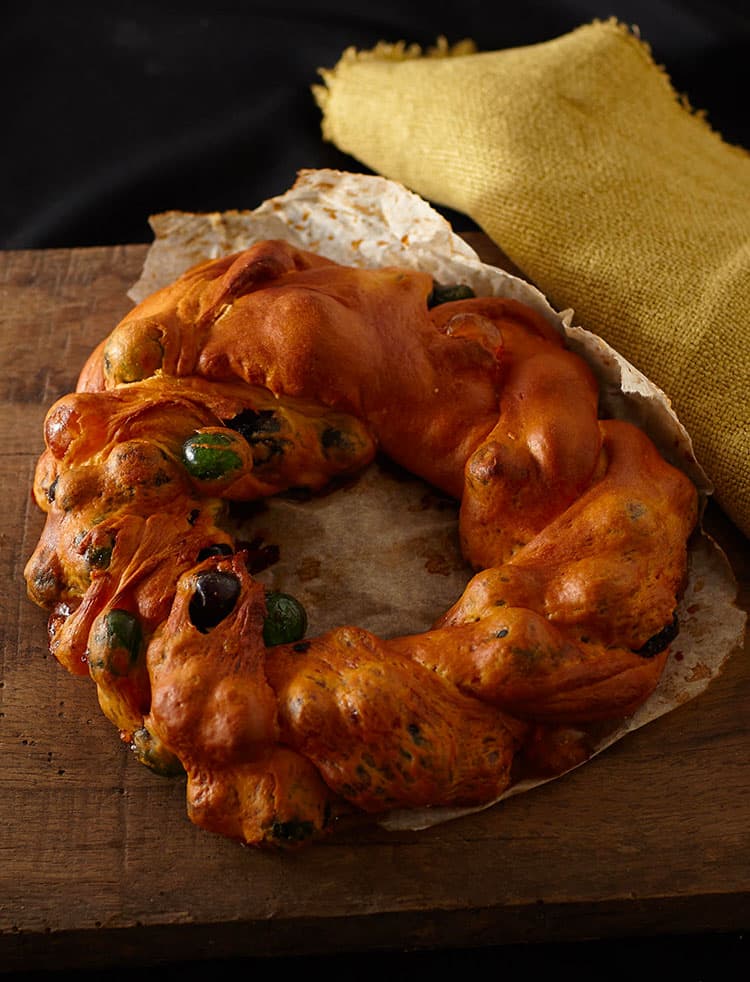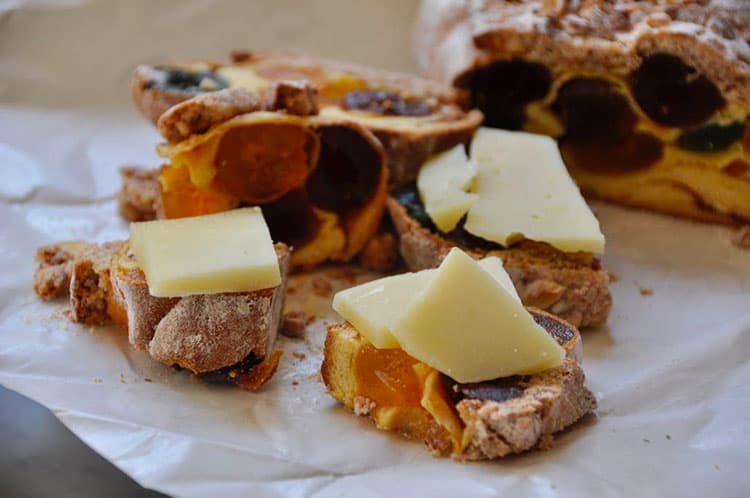Candied Cherry Loaf

A sheet of brioche bread, a thin layer of apricot jam, candied cherries (green, white and red), all rolled up and garnished with a layer of marzipan and a sprinkling of icing sugar.

The Candied Cherry Loaf is a "very rich" dessert (it looks a bit like a strudel), it was created by grandfather Ernesto Pandolfini around the 1930s and is still baked every day at the Biscottificio Mattei, in via Ricasoli in Prato.
The inspiration for this dessert is the Corona Candita (The Candied Fruit Crown): created by Florentine and Prato bakers in the 19th century to pay homage to the king and Italy (this is why the candied cherries are green, white and red). For the crown recipe please refer to the book “Bisenzio tradizioni e cucina” by Umberto Mannucci.

Grandfather Ernesto took the old recipe and made a special interpretation of it. The dough is still brioche bread, which is rolled out just as it was done for the crown, but our grandfather decided to enrich it with a thin layer of jam. Once the tricolor candied cherries have been distributed (in abundance in the loaf compared to the crown) the dough is then folded over, closed on the sides and covered with almond paste and icing sugar.

Among the many shop anecdotes (the historic Biscottificio Mattei shop in the centre of Prato), there are several related to this dessert, in particular the different names it has been called over the years. In fact, customers have come in asking for the "bread with eyes" or the "crocodile", the "sweet traffic light" or the "log of happiness", or in even simpler ways: "candied braid" or "candied log" or "fruitbread"... it would sometimes take a while for the shop assistants to realize what product it was but in the end the customers were always happy, smiling and giggling because they had successfully purchased what they wanted.
This dessert has a short life so if you want to enjoy at its best: you must eat it within a few days of it being baked (the expiry date is always indicated on the wrapping and indicates the best time to eat it by). But if you happen to receive it nearly a week after it has been produced, do not despise cut it into slices and toast it.
Or, do what we sometimes do at the Pandolfini house, on occasions like an improvised aperitif: cut the loaf into slices that are not too thick, then halve it again, spread a very thin layer of mustard and garnish with a slice of semi-matured pecorino, that’s the moment you will realise.... that taste has no limits.
